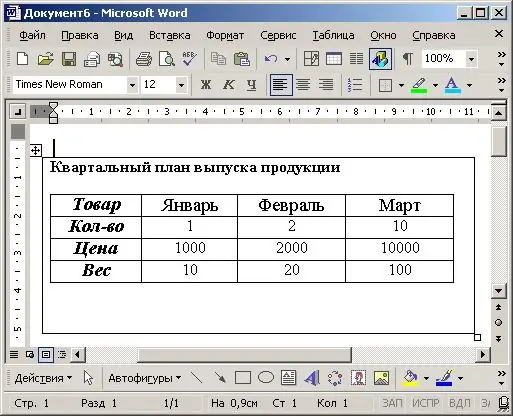Microsoft Word is equipped with numerous features and formatting tools to help you create documents of all kinds and formats, and one of the most convenient Word features is creating tables. If you have created a table and you need to concatenate several rows or columns with common subheadings, the function of combining cells will help you, which can be applied at any time to any table created in Microsoft Word.

Instructions
Step 1
Suppose you have multiple columns and rows in your table. Click on the top cell with some text, and then on the Word menu open the Tables and Borders toolbar. Click on the table icon to bring up the menu for inserting an object, and select "Add rows above".
Step 2
A new row will appear in the table - select several cells on the right in it. Click on the "Combine Cells" button and you will see how several cells are combined into one. Enter the desired text or subtitle in them.
Step 3
In exactly the same way, you can combine other cells with a new row. In the Tables & Borders panel, select an option to center the objects so that the label in the shared cell looks symmetrical. Center all column headings.
Step 4
If you do not want to merge, but, on the contrary, split cells, use the "Split cells" option, which can be applied in the same way to any several manually selected cells.
Step 5
In the window that opens when splitting cells, specify the number of rows and columns that you want to end up with, and uncheck the box next to the "Combine before splitting" line.
Step 6
Often tables are so long that they do not fit on one Microsoft Word page. In this case, so that the table transferred to the next page does not lose its meaningful appearance, select the "Headings" item in the "Tables" menu, and configure the table so that all the headings entered above are automatically duplicated when the table is transferred to another page.






